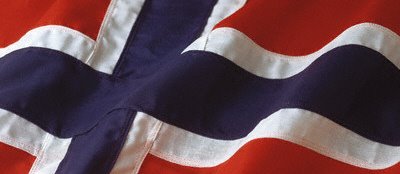A country which cannot boast of any historical significance save some light pillaging in the 10th century, whose history is mostly dominated by other countries, a country so self-just that they were most likely given the Nobel Peace Prize as an ironic joke, where the people are strange when you're a stranger, often voted among the more expensive countries in the world; why would you even consider going to it?
Because of the above mentioned reasons. In Norway, no one is going to drag you into their shops, try to embezzle you at the local sights, become your "friend" when you really want to be alone, in fact, even the pickpockets are more often than not so distant that they prefer not picking your pocket to getting close to you.
What's there for you, then? To go to Norway means to look at the nature. The cities are not attractive, the shopping is hardly desirable, the prices are absurdly high and the food... let's not go there yet. The Norwegian nature, some 80% coastlines and mountains andquite beautiful ones at that, are absolutely worth a look. If you go really far North, you will catch the Northern Lights, which is the least dangerous acid trip simulation you will ever find.
When to go
- Winter: If you're looking for a snow extravaganza, do not go in the Christmas time. You might find snow in a deserted area, but the song "White Christmas" only starts either nostalgia or environmental debates in Norway. A better bet is late January - early February.
- Summer: Contrary to popular belief, Norway has summers. Especially in the South, where teperatures can rise above 90 F/35 C. Common practice during these hours is drinking a beer outside. Norwegians cannot abide sitting inside during the fine weather.
- Events: If you really want to discover Norway, try aiming for May 17th in the capital. This is the Norwegian Constitution Day, celebrated because it was the day after the constitution was finished and the day before it was ratified. Norwegian logic dictates this (Christmas Eve is celebrated, while Christmas Day is ignored; the same is true for Easter). Back to May 17th, it is celebrated by many original ways of making noise. The most popular are marching bands, of which there are at least 100 in the capital, drunk-to-hungover high-school/6th form graduates in overalls playing loud pop music and children blowing whistles and shouting "hooray". Many grown ups will wear strange peasant-y costumes, but remember not to insult these. Norwegians take pride in them, which makes it the only time rural pasttime gets any credit. If you don't remember what the Norwegian flag looks like after witnessing this phenomenon, you should consult a doctor. The day is dedicated to children, however, and as such it is customary to have hot dogs or ice cream, two tings even Norwegians can make with relative success.
- Extreme sports: All year, depending of what type you prefer. A word of warning, though: aside from messing up their Constitution Day (above), few thing annoy the otherwise phlegmatic people more than extreme sport participants getting stuck in a cliff 200 metres above ground or on an archipelago in the midst of a strong river by a waterfall. Norwegians will help you out of your calamity, and at no great cost for you, but you should do well to leave the country afterwards, or at least shut up about your story. If you must tell it, praise the Norwegian rescue operation to no end. An advise is to use the local experts. Norway has few large mountains, but they have some nasty cliffs and some mean waterfalls at the end of their unruly rivers.
Where to go?
City sights will be covered here. As far as nature sights are concerned, it is vital to remember that Norwegians love to go on tour, walks and other things for its own sake, rather than to have a destination. This lack of initiative is found elsewhere in Norwegian society as well. As far as nature sights are concerned, it is something like this:
- Fjords. Long inlets of water covered on both sides by steep hills only occasionally polluted by the odd dwellings. The reccomended fjords are Sognefjorden (the second most sparsely populated county, a county without any actual town), Hardangerfjorden (if you're fond of sour apples) and Lysefjorden (because of Prekestolen under).
- Mountains and other rock formations. Norway has large mountain ranges, half of which have summits easily reachable by walking, if you're into that sort of thing. The largest mountain, Galdhøpiggen, isn't. If you're planning on getting a lot of enemies, try to reach the summit alone, get stuck, get hypothermia and get saved by the Air Ambulance. Speaking of self-induced misery, there is a word to be said about Prekestolen (the pulpit). Prekestolen is a more-or-less square level with vertical walls downwards. It is not only quite attractive (as you can see from Lysefjoden), but if you are in a malicious mood, you might see a base jumper or a windsurfer make a complete fool of himself.
- Hurtigruten. There are boat tours, and then there's Hurtigruten. It's name means the speedy route, which is an excellent example of newspeak. It takes a good 7 days to complete the route from Bergen to Kirkenes (11 if you're going back), stopping at places most Norwegians know nothing about. If you have a couple of days to kill and have arrived at the conclusion that the cities are not worth your time, however, you will not be disappointed with the scenery.
Other topics:

